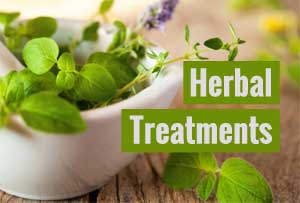- Home
- Editorial
- News
- Practice Guidelines
- Anesthesiology Guidelines
- Cancer Guidelines
- Cardiac Sciences Guidelines
- Critical Care Guidelines
- Dentistry Guidelines
- Dermatology Guidelines
- Diabetes and Endo Guidelines
- Diagnostics Guidelines
- ENT Guidelines
- Featured Practice Guidelines
- Gastroenterology Guidelines
- Geriatrics Guidelines
- Medicine Guidelines
- Nephrology Guidelines
- Neurosciences Guidelines
- Obs and Gynae Guidelines
- Ophthalmology Guidelines
- Orthopaedics Guidelines
- Paediatrics Guidelines
- Psychiatry Guidelines
- Pulmonology Guidelines
- Radiology Guidelines
- Surgery Guidelines
- Urology Guidelines
Herbal supplement Kratom unsafe for treating addiction and pain, reveals new research

The herb kratom is increasingly being used to manage pain and treat opioid addiction, but it's not safe to use as a herbal supplement, according to new research led by faculty at Binghamton University, State University of New York.
William Eggleston, clinical assistant professor of pharmacy practice at Binghamton University, had been seeing more and more patients presenting with toxicity or withdrawal from kratom use. Kratom is a herbal supplement derived from a plant that grows throughout Southeast Asia. It is well-reported that the active chemicals in the plant act on opioid receptors in the body. Patients report using the supplement to treat/prevent withdrawal, treat opioid use disorder, or treat pain.
Eggleston was curious to see what types of toxicities were being reported to Poison Centers nationally in order to better assess whether or not kratom is safe enough to be used as a herbal supplement. His team conducted a retrospective review of kratom exposures reported to the National Poison Data System to determine the toxicities associated with kratom use. They also reviewed records from a County Medical Examiner's Office in New York State to identify kratom? associated fatalities.
A total of 2312 kratom exposures were reported, with 935 cases involving kratom as the only substance. Kratom most commonly caused agitation (18.6%), tachycardia (16.9%), drowsiness (13.6%), vomiting (11.2%), and confusion (8.1%). Serious effects of the seizure (6.1%), withdrawal (6.1%), hallucinations (4.8%), respiratory depression (2.8%), coma (2.3%), and cardiac or respiratory arrest (0.6%) were also reported. Kratom was listed as a cause or contributing factor in the death of four decedents identified by the County Medical Examiner's Office.
The findings suggest kratom is not reasonably safe and poses a public health threat due to its availability as a herbal supplement.
"Although it is not as strong as some other prescription opioids, kratom does still act as an opioid in the body," said Eggleston. "In larger doses, it can cause slowed breathing and sedation, meaning that patients can develop the same toxicity they would if using another opioid product. It is also reported to cause seizures and liver toxicity. Kratom may have a role in treating pain and opioid use disorder, but more research is needed on its safety and efficacy. Our results suggest it should not be available as a herbal supplement."
Eggleston and his team are working with colleagues at SUNY Upstate Medical University to better assess how many patients are actually using kratom and if the risk for toxicity changes depending on the dose of kratom taken.
For more details click 0n the link: http://dx.

Disclaimer: This site is primarily intended for healthcare professionals. Any content/information on this website does not replace the advice of medical and/or health professionals and should not be construed as medical/diagnostic advice/endorsement or prescription. Use of this site is subject to our terms of use, privacy policy, advertisement policy. © 2020 Minerva Medical Treatment Pvt Ltd